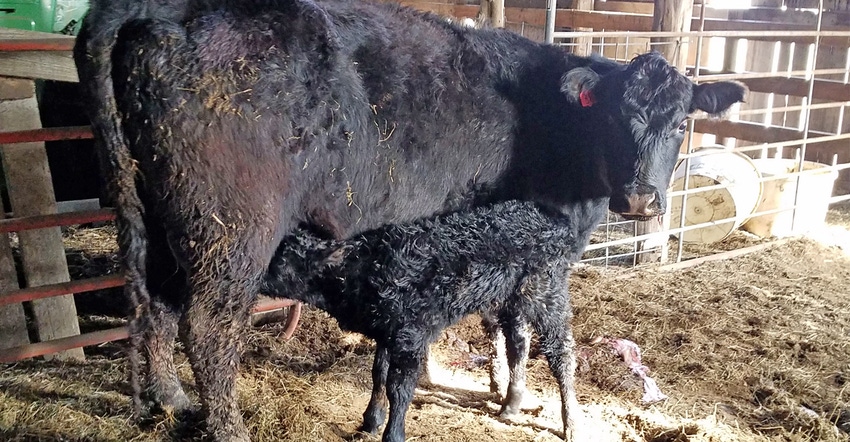
It might not be an ideal way to start the weekend, but when my dad came to the house on the home farm in Iowa on a recent Saturday, I could tell immediately it was urgent. Growing up on a farm, when your dad opens the front door and asks for an extra helping hand, you learn to respond quickly. Given the time of year — calving season — and judging by the tone in his voice, it was clear: A cow was having trouble calving.
As it turns out, this was a second-calf heifer giving birth to a backward calf, and my dad needed help moving cattle panels and getting her into the barn to pull the calf.
Fortunately, everything went smoothly, as we pulled the calf and cleared its mouth and nostrils. After seeing the calf nurse for the first time several hours later, I watched my dad breathe a massive sigh of relief.
It's not something everyone, even those who grew up around livestock, are willing to do for a living. It serves as a reminder of the physical and emotional toll livestock production can take on a farmer or rancher, and it’s why so many young farmers in this part of southwest Iowa have torn up pasture and moved away from the cow-calf business. That holds true in parts of eastern Nebraska as well.
It can be frustrating, even anxiety-inducing to go through calving season and the challenges that go with it. For many, this can mean late nights and early mornings, keeping a close watch on cows and heifers that are close to calving and setting up the proper facilities to accommodate these cattle if some goes wrong.
Still, it's a part of life on a farm or ranch that is as rewarding as it is challenging — and something that I haven't experienced nearly as often since I've moved off the farm.
Perhaps the biggest challenge for larger operations is retaining good farm and ranch employees to help with urgent matters like this. With reports of rural flight and fewer millennials returning to the farm, it's a major hurdle to keep someone around with the endurance and patience to work with livestock.
Fortunately, more tools have come to light in recent years to help ease the labor burden for cattle producers; precision agriculture isn't limited to row crops, after all. More technology is coming down the pipeline and, in some cases, is already available.
The includes tech for remote estrus detection, calving alerts, remote monitoring of body condition score, cattle location in a pasture, and overall animal health and welfare. There’s even a kind of smart collar for cattle that would potentially eliminate the need for electric fence.
However, as one Nebraska Extension specialist recently pointed out, there's an art to managing a herd of beef cattle, especially when it comes to the cow-calf sector. The adoption curve for many of these technologies will likely be a gradual ascent, and none of them will ever completely replace the boots-on-the-ground role of the ranch manager or stockman. In the meantime, the role of those willing to shoulder the burden that goes with working in the cattle business remains irreplaceable.
About the Author(s)
You May Also Like






